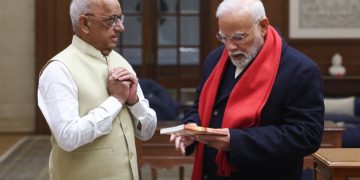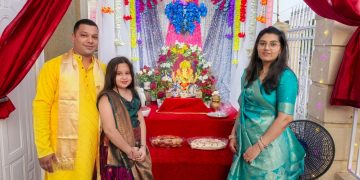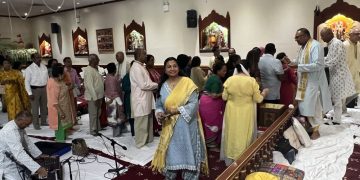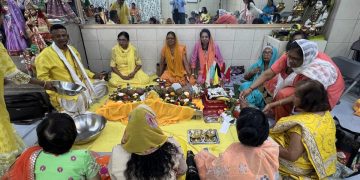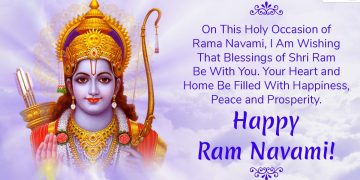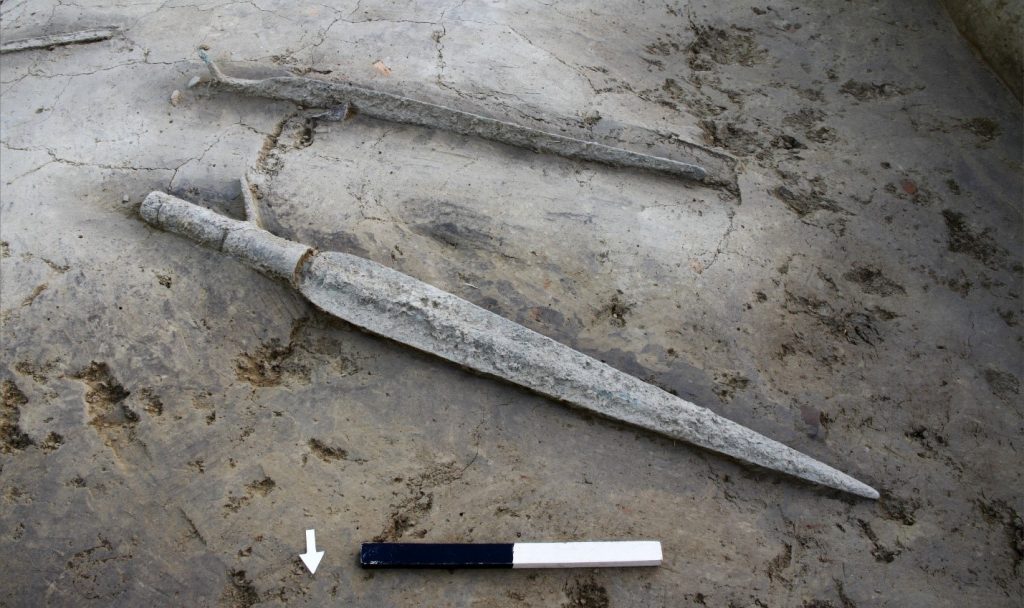
A recent archaeological excavation at Sinauli India has revealed a cache of treasures including the graves of ancient India’s very own Amazons. The graves comprises the burials of female warriors and their military paraphernalia including a chariot and swords. At this time during Navraatri we hear sacred stories of the warrior Goddess Durga and her defeat of adharmic enemies. Yet, this archaeological excavation shows India has a past of real women warriors. Let us reflect on the history of women warriors and Hindu warrior queens this Navraatri while we worship our awesome female warrior Gods for nine nights.

In 2018 the Archaeological Survey of India (ASI) uncovered an immense burial site at an excavation in Sinauli, India under the leadership of Dr. Sanjay Manjul containing about 116 burials. Excavations have been ongoing here since 2005 with a large necropolis being uncovered. The area was first discovered while Sriram Sharma had been ploughing his field. But in March 2018, at this necropolis they excavated the burials of ancient India’s very own women warriors. The bodies of both men and women perhaps fighting side by side in the ancient world were found with grave goods including shields. The men were buried with their shields and the women were buried with theirs respectively. Therefore, this gives an indication of these women being warriors. The ways in which these ancient people were buried further indicated they may have participated and died in battle. Some graves contained bodies while other burials were symbolic where in the absence of a body personal items were buried while others included only a few bones. These are good indicators of actual death in battle for people buried with military items since sometimes such burials could be purely symbolic of a warrior nature. The archaeological material culture evidence indicates that the swords and shields do not appear to be ceremonial and hence they were used by these women for actual warfare. The body of a female was buried with a copper dagger beneath the coffin and the sword in an upright manner signifying a high status and class of warriors where women were included. This suggests the community was divided into many classes perhaps in accordance with India’s ancient varna or what in modern times is misinterpreted and mislabeled as the caste system.

Antenna swords were also found buried with the warriors as well as a trove of other ancient treasures including anthropomorphic figures, peacock and peepal leaf motifs, ritual earthen pots, harpoons, rings, torch, agate beads, armbands, steatite inlays, copper helmets, copper daggers, copper wares and ochre coloured pottery (OCP). The copper helmets could be the world’s oldest according to Dr. Manjul. The helmets associated with the females had steatite inlays which were different from the men who had copper ones. These people had battle down to an art form and a very sophisticated and advanced forms of technology. From my perspective as an archaeologist, the differences in gear for men and women suggest this idea of women in battle was not even new to them 4000 years ago it was already part and parcel of perhaps an even older practice. They also uncovered a solid triangular spoked wheel chariot buried at Sinauli which has been dated to 2100-1900 B.C.E. It appears to be able to yoke only two horses. It was the use of such copper sheaths, wires and inlays etc. that preserved the items for over 4000 years.

However, women warriors are not unheard of in Hindu scriptures or in their Itihaas (history). To put this into perspective, in the Mahabharata, Shikandhi is a female warrior who was inducted as a commander in the army of the Pandavas (the good guys on the side of Arjuna). In the Harivamsa of the Mahabharata, Arjuna’s wife, Subhadra drove the chariot while Arjuna fought with the Yadavas as they drove towards Indraprastha. Arjuna also married Pramila who is believed to be the Queen of a race of women warriors who lived without men in the land of Gaurivan. After the Mahabharata War when Dharmaraja was restored, Arjuna wanders into her kingdom searching for the white horse of the Ashwamedha Yagna which he is told to capture. He had to battle her for the horse since she captured it. He did fight her and he married her too! This story is in the Jaimini Mahabharata. The famous Draupadi from the same Mahabharata is always told as though Draupadi was always a helpless woman but Draupadi was known for her ability to use swords.
Yet if Hindus sit and think critically even about the information disseminated at the mandirs (temples) they will realize something about the Ramayana as well. When Dasaratha was wounded on the battlefield, we are told, that was when he made the boon to Kaikeyi which she then used later to banish Rama into the forest. What was Kaikeyi doing on the battlefield that she could run to the king’s side so quickly? It appears while Kaikeyi’s warrior status may not have been fully explained in the Ramayana, her warrior station might have been alluded to in the text. In fact, it is written that she was protecting him in the chariot. Our ancient scriptures mention women warriors like Vishpala who lost her leg and continued fighting with a mechanical one.
The Hindu scriptures such as the Devi Bhagavatam and the Skanda Purana speak of women warriors in ancient India who fought and commanded armies on the battlefield. The so-called “mythology” of Goddess Durga taking on Mahishasur that we hear of every Navraatri may not simply be a symbolic “fanciful” story that simply teaches lessons to Hindus but probably based on the knowledge of women in war. Not only did Durga fight but she actually fought alongside thousands of female warriors who are named in the Devi Bhagavatam. Perhaps the truth is these sacred narratives are not only symbolic stories based on real experiences but these stories may be a deified version of actual events. Deification was also done in the ancient world where real life heroes became deified (given a God-like status) such as Julius Caesar, Alexander the Great and to an extent George Washington. The Devi Bhagavatam Purana centers on the Goddess as the primary divinity while the Devi Mahatmya which is an even earlier text found in the Markandeya Purana asserts the Goddess as supreme. When the Gods led by Indra could not defeat the asura Mahishasur they called upon Durga and gave her all their weapons and only the Goddess was able to defeat him gaining the name Mahishasurmardhini which is celebrated on Vijaya Dashimi. It comes from the Devi Mahatmya and is told throughout the Caribbean every Navraatri. Parvati also slayed the asuras Shumbha and Nishumbha in the Devi Mahatmya. This Navraatri remember the women warriors at Sinauli when you hear the story of Durga.
In fact, Sinuali is one of the five villages Krishna had asked for the Pandavas when he tried to garner for peace before the Great War at Kurukshetra. Sinauli in the ancient world may have been originally Sinausthaali since Sthaali or Sthaan means land. In fact, this is why many countries surrounding India contain the word sthaan like Pakistan (Pakisthaan), Afghanistan (Afganhisthaan) etc. It means land in Sanskrit and could be added as a suffix to the end of a word. Sinauli is only 60 kilometres away from Delhi (Indraprastha) as Delhi was known in the Mahabharata. Many of the places from the Mahabharata encircle modern day Sinauli including Hastinapur (Kaurava capital), Indraprastha (home of the Pandavas) and Vyagprastha/Vakyaprastha all 94, 60 and 29 km away while others include Svarnprastha, Tilprastha and Panprastha. Parasurama Kshetra where Parasurama taught weaponry to Bhisma is only 40 km away from Sinauli. The Kurukshetra battlefield is not that far away either at 119km. So the people at Sinauli had no idea the Mahabharata was happening around them? Depending on the date of the Mahabharata war, they probably took part.
Off course while this shows a context of women warriors all of these finds are even more significant because they throw all of the Aryan “invasion” Theory or AIT into question. Since the colonial times and even post-Independence India academics with a western oriented swing have been hammering India that it was foreign invaders from Europe who conquered them and brought the civilization they knew. In India, Northern Indians are pitted against Southern Indians in an Aryan/Dravidian divide till this day because this theory was used to divide and conquer the people. It tells them, basically, Indians and Hindus especially are the original invaders of this land. It continues to be used by anti-India anti-Hindu academics and politicians, and even organizations and groups from the west with an agenda including conversion. It also helped solidify and legitimize British rule. This is why any objection against this outdated colonial theory is met with aggression because it topples their power over Hindus and India. Anyone who dares to ask the truth is called nationalist, fascist and Hindutva. In essence they play the race card and religion card to quiet people.
Part of the theory surrounded the fact that horses, shields, chariots and swords without hilts had never been found. India has a hot and even tropical climate in many parts and unlike Egypt, Sumeria, Mesopotamia and other hot, arid or desert regions things deteriorate quickly. So while the scriptures abound in descriptions like the shields it was simply not found until now. Academics used this theory as a chance to express that the ancient rishis who had composed the Vedas had imagined all of it. They also believed the rishis imagined the Sarasvati River which was also later found by satellite technology. However, Max Muller and Mortimer Wheeler who had the main hands in proposing the Aryan Invasion Theory (AIT) said the “invasion” happened around 1500 B.C.E. and horses were brought in from outside India from Central Asia with the “invaders.” Tantamount indigenous scholars and even westerners have shown over the years that the opposite was most likely true that India being one of the oldest civilization probably had a migration of sorts outwards from India giving rise to an Out of India Theory or (OIT) that explains the entire Indo-European connection with languages, ritual, culture, Gods, texts etc. which is common to all if not most. These finds at Sinuali are hundreds of years older.
Such events of groups leaving India in the ancient world are mentioned in the Rig Veda in which tribes like the Alinas, Druhyus and Prithvis leave after a war possibly matching the respective Hellenas (Greeks), Druids and Parthian civilizations seen later in history in Europe. The Bharata people (from which we derive Bharat, India’s name for India) are descended from Adityas, Daityas and Danavas. The Pandavas and Kauravas of the Bhagavad Gita are descended from the Bharatas. However, throughout Europe the word Danavas may be connected to Danaan a very popular name. The Greeks in the Illiad (Trojan War) called themselves Danaans. The mighty Danube River flowing through Europe was sacred to its ancient people. This Danube River and other rivers like the Don, Dnieper and Dniestr may have been named after the Goddess Danu, the mother of Vritra in the Rig Veda. It also gives rise to the main deities of the Irish Gaelic Tuatha de Danaan (people of the Goddess Danu).
The burials do show that the pottery do not line up with contemporary Harappan civilization. However, this doesn’t mean they weren’t indigenous or even Vedic. In the Rig Veda there are two types of ways they deal with the dead called agnidaghda (cremation by fire) and anagnidagdha (burial). Also in the Vedas there are different groups of people many of whom fought with each other and had different practices some of which like burial and cremation are both mentioned. For example, worshippers of Indra like the Bharatas and Purus fought the people who did not worship Indra (anindra) like the Druhyus. Burials are referred to in the Rig Veda in hymn 10.15 while hymn 10.18 mentions a grha (house) for the dead comparing it to a womb in which ritual pots of soma, ghee, medicines and other items are placed on a catuspadi (four legged death bed) along with their weapons and chariots. The finds show a cultural continuity in the burials which adhere to the funeral hymns in the 10th mandala of the Rig Veda. This mandala contains some of the most famous Rig Vedic hymns such as the Purusha Sukta (Nature of the Universe) and the Nasadiya Sukta (The hymn of creation). These people may be slightly different from the Harappans but there are plenty of tell-tale signs they are ancient Vedic people or Hindus. Even in India today each state’s culture is so different from the other if we didn’t realize they were all Hindus one would not be able to tell at first glance.
We often hear about stories of Amazon warrior women from the ancient Greek world whom the Greek heroes and warriors of yore like Theseus and Hercules fought. Yet we have never really found confirmation that they existed. Their tales have been told by writers like Herodotus and in the tales of the Amazonomachy. Amazons are also fought in the Trojan War found in the epic cycle in a section called the Aethiopis (which includes the Illiad of Homer) where the Amazon Penthesilea fought the great Greek hero Achilles in Troy. Sites have been found of Scythian warrior women along with graves of Sauromatian and Sarmatian people found in the Eurasian Steppes near Russia in kurgans but it is still not a surety they were thee Amazons. Here, however, ancient India’s stories of warrior women appears to be true dating all the way back to the ancient scriptures like the Mahabharata and most likely even older.
In one of my articles previously posted on ICDN I mentioned that Krishna’s wife Satyabhama was also a warrior princess who fought alongside Krishna, charioteered for him and was the one who urged him into the Narakasura War. That article was originally presented as an academic paper in Trinidad and Tobago entitled, “Hindu Warrior Queens: Decolonizing Historical Narratives and Reshaping the Perspective of West Indian Women through their History.” See the link here to this article, Hindu Warrior Queens: Decolonizing historical narratives and reshaping the perspective of West Indian women through their history. – Indo Caribbean Diaspora News (icdn.today).
Not only do these graves appear to be those of warriors but the sophisticated grave treasures means they were most likely royalty. The chariots appears to have had places to attach a pole for an umbrella-type canopy. This means a royal-like chariot and royal burials. These ancient people belonged to a time frame in which ancient cities from a similar context and caliber like Rakhigiri and Bhirrana also show cultural continuity with the Hindu civilization hence this continues to support my original thesis of India’s Hindu warrior queens. While my paper focused on royal Hindu women warriors of the last thousand years, during my research it occurred to me that much of India’s ancient history has been thoroughly neglected and there is still a great deal left to be uncovered. Historians and archaeologists have historically left India’s history in a rut and in ruins. Future historians and archaeologists must do better. This means, there is much work to do. I personally believe India will one day become the next great frontier of archaeology.
Yet, did you hear about the women warriors of Sinauli on the news, media, newspaper, television or online app? Most likely not. It was not covered on the mainstream news. Around the same time this year when the news broke about Sinauli news also broke globally about Aten a “new” lost “golden” city unearthed in Egypt near Luxor by Pharaoh Amenhotep III. News also broke internationally of a Roman ceremonial chariot in Pompeii, Italy, something which had been found for only the first time ever. These two finds are still being covered in the media endlessly. But there is silence on Sinauli. This is the bias India and the Hindu civilization faces by the western media. It’s not to say India is some small unknown island somewhere on the edge of the planet. India is one of the world’s leading and rising countries of today. It shows because India is in the news every day.
Yet when the mainstream news covers India it’s all about caste, cows, curry, Hindu nationalism, Modi is bad and all of that. Their whole spin on India is to cover it negatively and manipulate news, history and other things about India to spread disinformation and give a warped view of the country. This is how history is hidden, maneuvered and engineered. It done as an orchestrated assault with the agenda to keep India down especially through the use of history. It is done to keep the world in the dark and control people’s ideas about India. It keeps their narrative of Aryan Invasion in everybody’s mind afloat even while new discoveries are being made. It keeps the people of India and the Hindu people despondent and easier to dominate. It’s that simple. Why wouldn’t a great archaeological find on women warriors in the ancient world make frontline news? We live in a time when women are being promoted like never before and powerful women are being portrayed onscreen, this should be right in their news circle to publish. But they will not do it. We make movies about Amazons and the only actual “Amazon” find in recent history was not covered? Bias.
Last but not least, dear West Indian/ Indo-Caribbean readers, this place Sinauli is located in the Bhagpat district of Western Uttar Pradesh, India. Uttar Pradesh is the same state where Ayodhya (Lord Rama’s Capital of the Kingdom of Kosala) is located as well as Mathura and Vrindavan (the cities associated with Krishna’s life). This is also the state where many of our ancestors came from. We are the inheritors of this heritage. This is our history. This is our ancestry, and it is not ordinary. Know it.
Shubh Navraatri
Nisha Ramracha,
Historian and Archaeologist.















